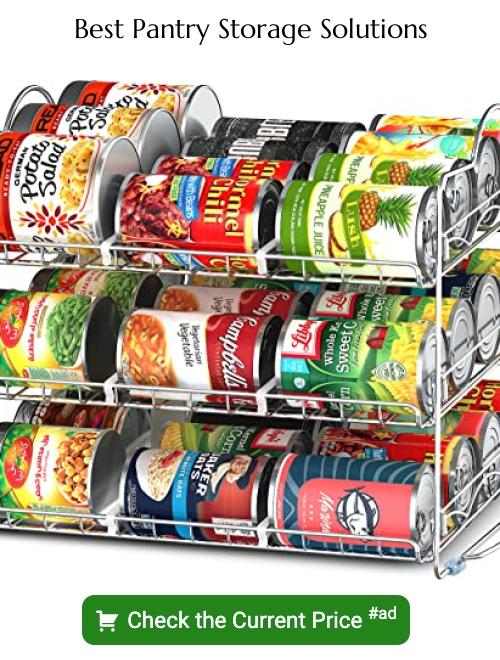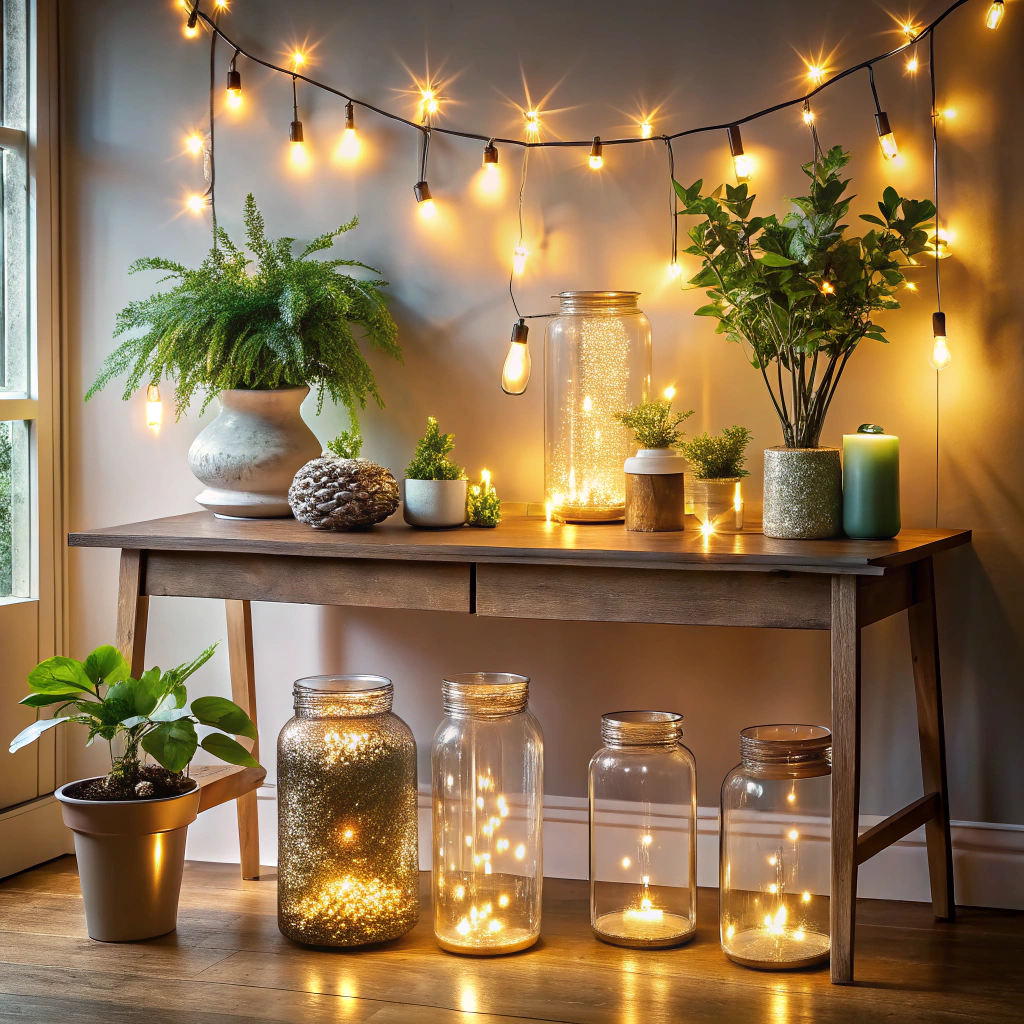Last updated on
Exploring the versatility of pantry placement, this article delves into whether or not a pantry must necessarily be positioned in the kitchen.
A pantry, traditionally located in the kitchen, serves as a dedicated space for storing food, kitchen supplies, and utensils. However, it’s not a rigid rule to have it in the kitchen. The pantry can be positioned in other areas of your home, depending on the layout, available space, and your personal preference.
Whether it’s a closet, a separate room, or a set of cabinets, the main goal is to create a functional and organized space that suits your lifestyle. This article will delve into the various pantry options, providing you with comprehensive details to help you make an informed decision about the best location for your pantry.
Key takeaways:
- A pantry does not have to be in the kitchen.
- The importance of a pantry in home organization.
- Differentiating between a pantry and a butler’s pantry.
- Factors to consider when determining the size of your pantry.
- Possible pantry locations within the home.
The Importance of a Pantry in Home Organization
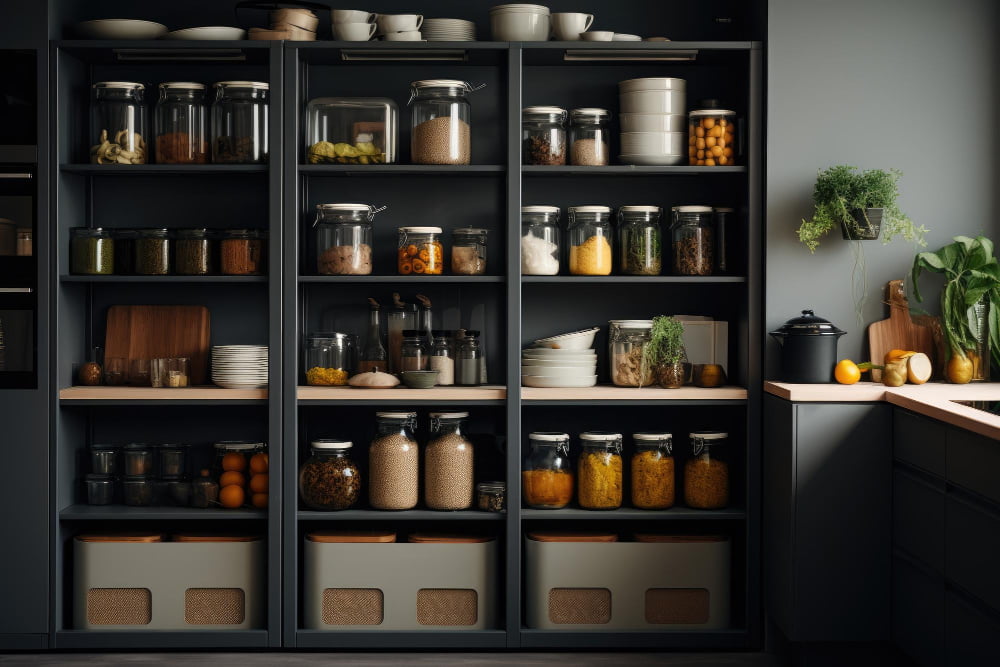
A well-organized pantry can facilitate more efficient meal preparation, reduce unnecessary grocery purchases, and provide better control over your food inventory.
1. Meal prep efficiency: With all your ingredients visible and readily available, you can streamline the cooking process. This can be particularly beneficial if you are responsible for preparing meals for a large family or house full of guests.
2. Budget management: An organized pantry lets you clearly see what you already have on hand. This can help prevent doubling up on items during your grocery shopping, helping you avoid spending money on unnecessary goods.
3. Food inventory control: When your canned goods, pastas, grains, and snacks are properly arranged, it’s easier to keep tabs on expiration dates. This helps to eliminate food waste, as you can be certain to consume items before they go bad.
4. Saving time during grocery shopping: When you know exactly what is in your pantry, you can shop more efficiently, saving both time and reducing the stress of forgetting an important ingredient.
Remember, pantries are not just for food; they’re excellent spaces for maximizing household organization, with room for cleaning supplies, pet food, and small appliances.
What Constitutes a Pantry: Definitions and Examples
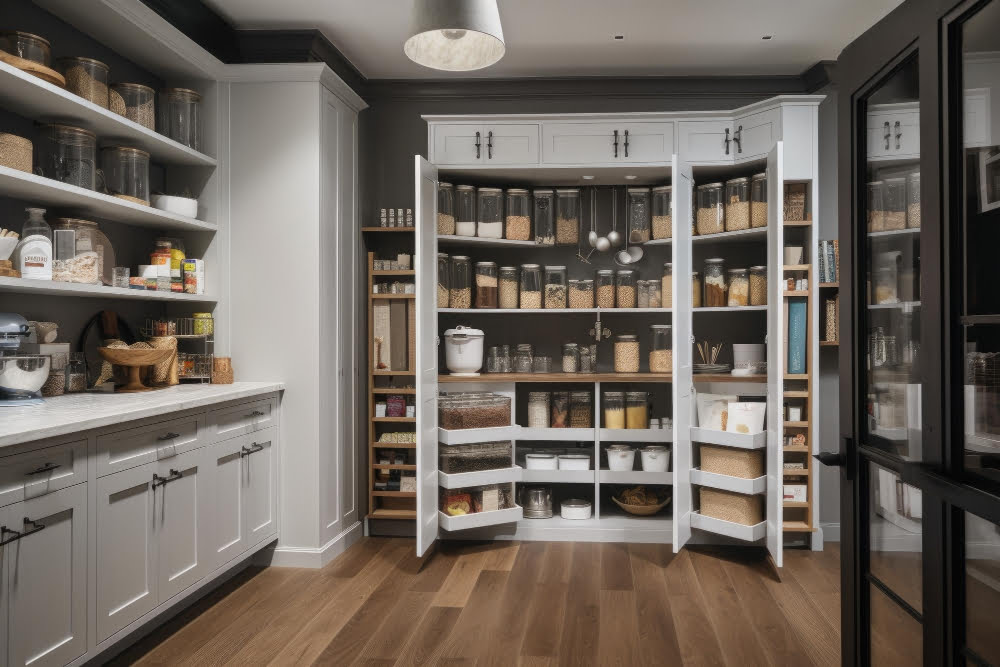
A pantry, by definition, is a dedicated space within your home designed to store food, beverages, and sometimes dishes and kitchenware. Here are key characterizing elements of a pantry:
- Food storage: Its primary purpose is to house dry goods like cans, boxed foods, and pasta.
- Cool and dark place: It should be situated in an area that stays cool and dark.
- Accessibility: It’s typically located in or near the kitchen for convenient access while cooking and preparing meals.
- Organization: It’s organized in a way to easily locate and retrieve items, usually on open shelves.
- Bulk storage: It often stores foods bought in bulk, large containers, or seldom-used speciality ingredients.
Take models like a freestanding pantry cabinet, a walk-in pantry room, or a slide-out pantry drawer as examples. Each configuration serves the same purpose but offers different levels of space and accessibility. So, it’s imperative to choose a pantry layout which suits your individual home and lifestyle.
Differentiating Between a Pantry and a Butler’s Pantry
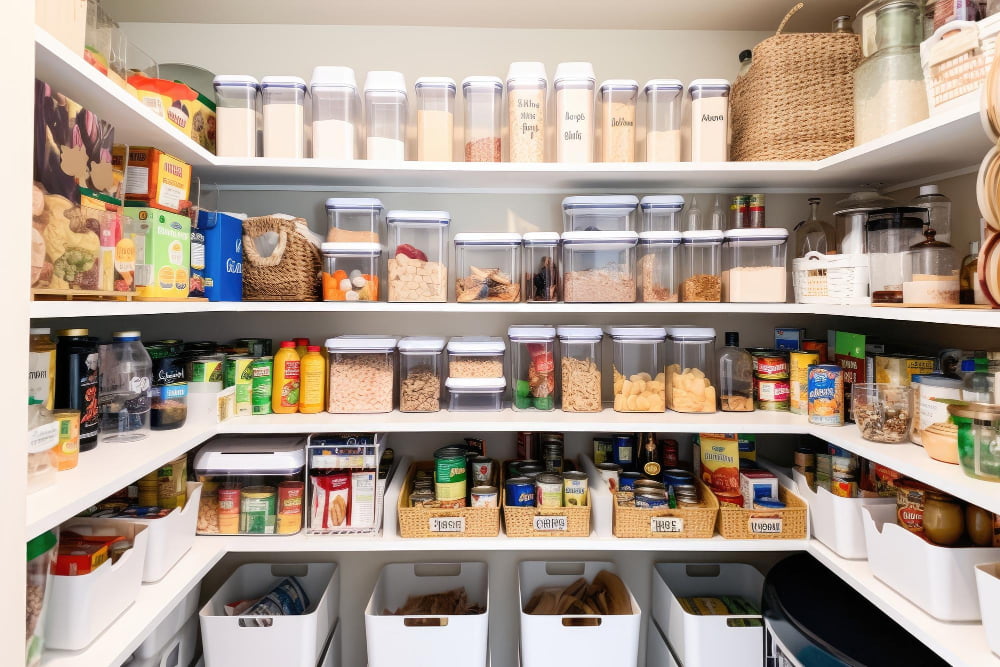
A traditional pantry serves as a small room or closet used for storing foods, dishes and table linens. It is often situated in or near the kitchen for ease of access. On the other hand, a Butler’s Pantry, a term originating from grand English homes, is a dedicated room positioned between the kitchen and dining area. It primarily functions as a service area for entertaining, acting as a staging area for servers.
Key aspects of differentiating these two types of pantries include:
- Location: A pantry is usually in or close to the kitchen, while a butler’s pantry situates between the kitchen and dining area.
- Purpose: Pantries focus on food and kitchenware storage, while butler’s pantry focuses on serving and entertainment needs.
- Features: A standard pantry typically offers basic shelving, while a butler’s pantry might include extra amenities such as a wine refrigerator, dishwasher, sink, and additional counter space.
- Design: Pantries often emphasize practicality and efficiency, whereas Butler’s pantries can be more decorative, reflecting the style of the home’s formal areas.
Determining the Size of Your Pantry: Factors to Consider
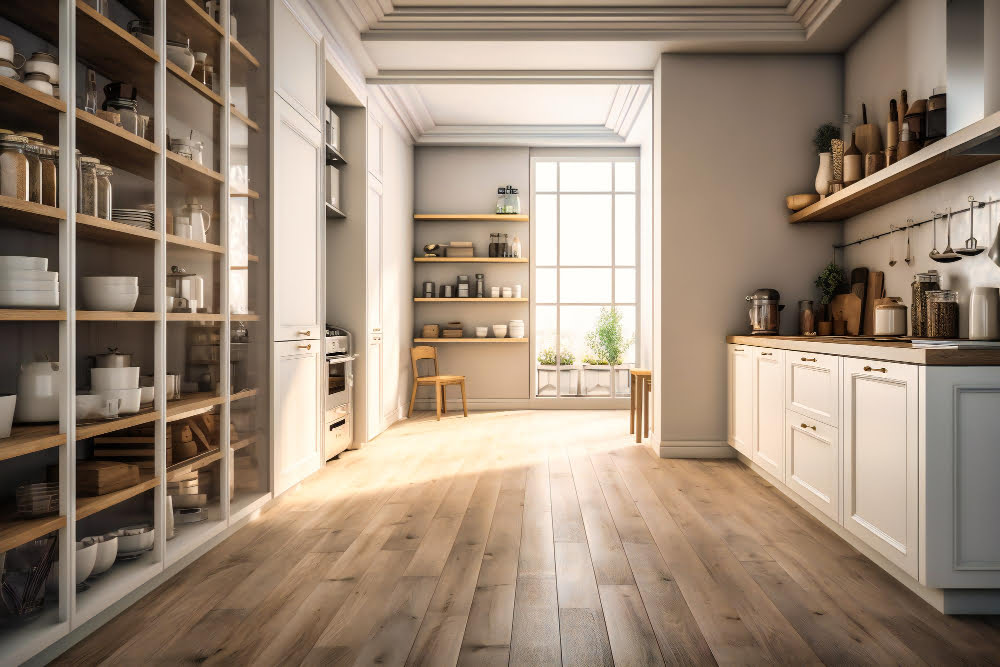
When planning the dimensions of a pantry, several considerations come into play:
1. Inventory: A bigger pantry makes sense if you prefer buying groceries in bulk, or you manage a large household.
2. Kitchen Size: The larger the kitchen, the larger the pantry can be. Scale the pantry size proportionately to avoid overwhelming your kitchen space.
3. Frequency of Use: Consider how often you cook or bake at home. If you’re a frequent kitchen user, you might need more pantry space for ingredients and equipment.
4. Special Requirements: If you need to store large appliances or specific ingredients that need a cool, dark space, factor this into your pantry’s size.
5. Budget: While we would all love a walk-in pantry, financial limitations might necessitate smaller, creative storage solutions.
Remember that the aim is a functional, well-organized pantry that caters to your specific needs, regardless of size.
Ideal Pantry Locations Within the Home
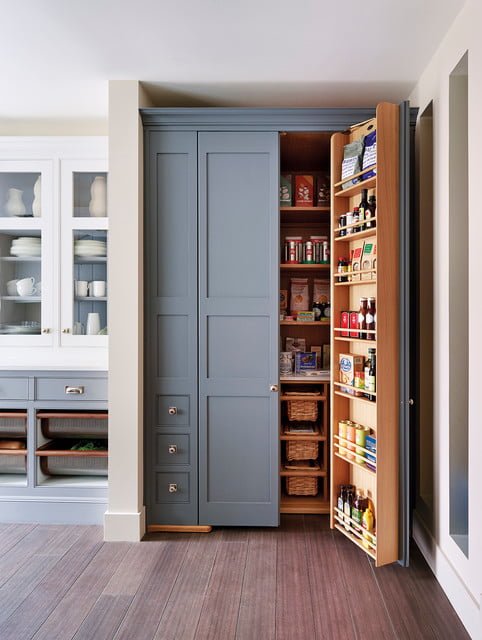
When determining an ideal pantry location, keep these important considerations in mind:
1. Proximity to the kitchen: While a pantry doesn’t have to be in the kitchen, it should be nearby for easy accessibility of food items during meal prep.
2. Accessible from different areas of your home: Think about other areas where you might need quick access to pantry items like a home bar or dining room.
3. Climate control: Choose a spot that isn’t prone to extreme temperatures or dampness which can harm food quality.
4. Storage expansion: If you’re a bulk shopper or have a large family, ensure your pantry location allows for growth.
5. Use of natural light: To save energy and make the space feel more welcoming, choose a location with access to natural light, but mindful of sunlight exposure to prolong shelf life.
6. Privacy: If you store high-value items or just prefer a clean aesthetic, a hidden, yet accessible location could be best.
Moving Beyond The Kitchen: Possible Pantry Locations
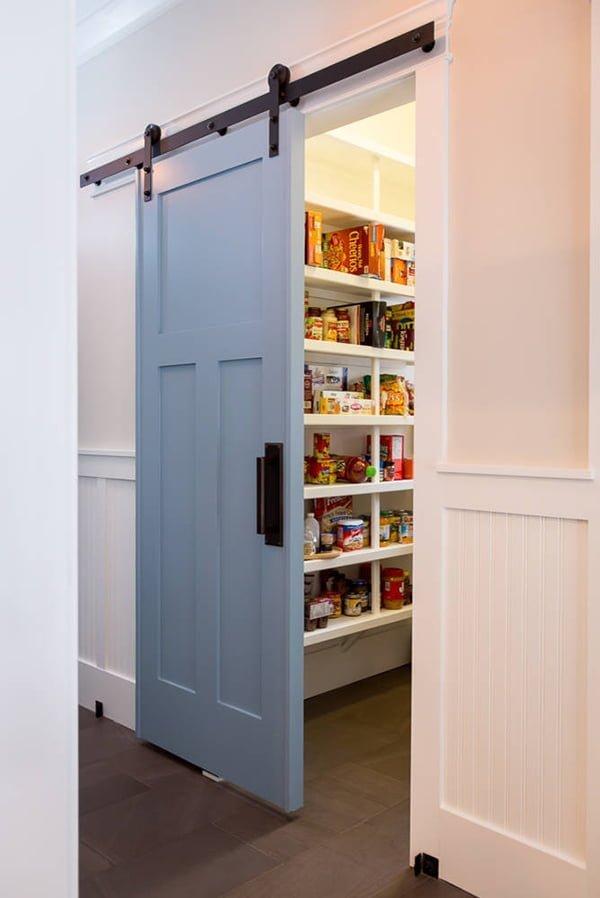
The dining room, a dedicated closet in the hallway or utility room, or a corner of your basement are all potential pantry locations. Before deciding, consider proximity to the food preparation area, frequency of use, and the type of food items to be stored.
1. The dining room: An unused hutch or sideboard can serve as a pantry. It will keep your dishes and silverware close at hand for serving, as well as provide storage for non-perishable and rarely used items.
2. Hallway or utility closet: Remove the coats, cleaning supplies, or various odds and ends, and replace with sturdy shelving to house your non-perishable food items.
3. Basement: If your basement is dry and clean, this can be an untapped storage space. Be sure to select items that can tolerate lower temperature and light conditions.
4. Under Stair Storage: Space under a staircase can also be transformed into a pantry for high-traffic items or non-perishable items like canned goods and beverages.
Remember, a pantry’s operation is not dictated by the space’s original purpose but by how it’s converted and organized to meet your specific needs.
Alternative Solutions If You Lack A Kitchen Pantry
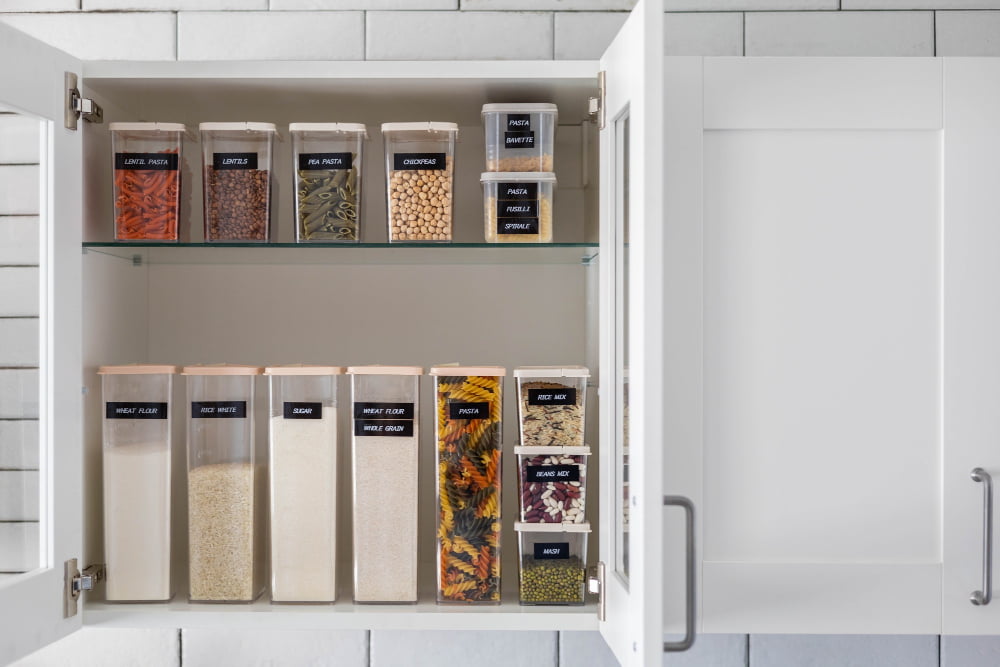
Finding pantry potential in alternate locations becomes essential when your kitchen lacks the space. Consider these options:
1. Closet Conversion: Transform a nearby utility or coat closet into a pantry. Install shelving units, optimize for height, and utilize door space effectively.
2. Freestanding Units: Furniture-like pieces, such as armoires or bookshelves, can serve as a makeshift pantry. Enhance their functionality with baskets, bins, and dividers.
3. Dining Room and Hallway Cabinets: If located close to the kitchen, such cabinets discretely fulfill pantry requirements without sacrificing aesthetics.
4. Under Stairs Storage: This often overlooked space is ideal for bulk goods storage. Customizable shelving makes space management effective.
5. Basement or Garage: For non-perishables and large containers, these areas can serve as overflow pantries. Adequate temperature control and pest prevention measures are critical.
Note these possibilities should align with your lifestyle and storage needs to ensure the utmost efficiency and convenience.
Choosing and Organizing Pantry Shelving
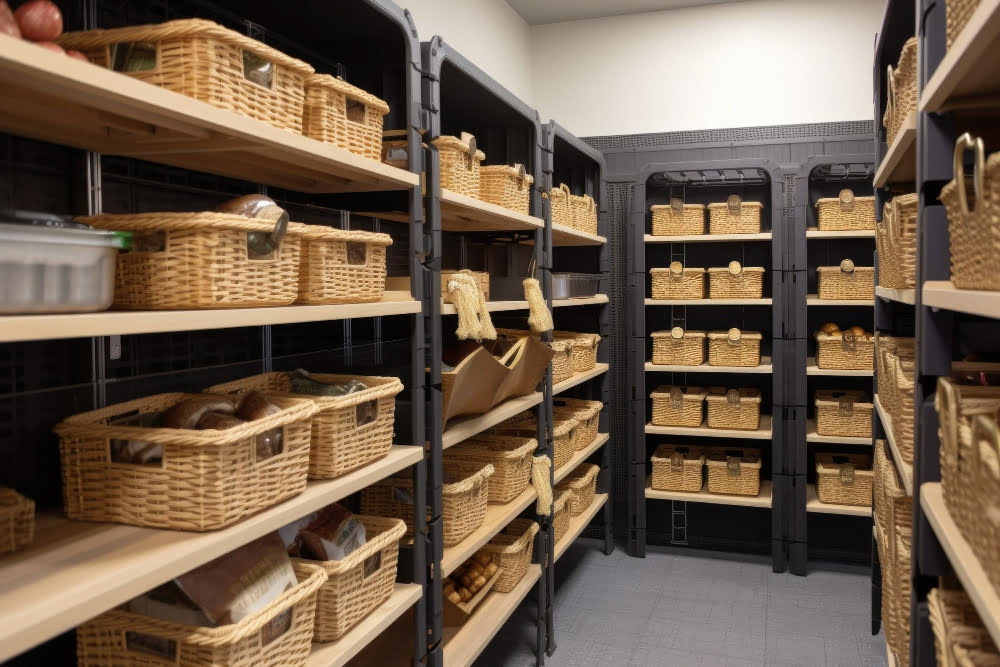
Optimal shelving can make or break your pantry’s functionality. Here are several key points to consider:
1. Material Selection: Choose durable materials such as solid wood or metal to withstand the weight of canned goods and bulk items.
2. Adjustable Shelves: Pick shelving that can be repositioned. This facilitates customization according to your needs.
3. Depth: Shelves that are too deep may lead to forgotten items at the back. Opt for shallower shelves for easy visibility and access.
4. Door Storage: Utilize the back of your pantry door. It’s a smart place to store spices or smaller items.
5. Vertical Spacing: Adjust the height between your shelves based on item sizes. Avoid wasting vertical space.
6. Use of Bins and Baskets: These can contain smaller items, prevent spills and make inventory easier.
Remember, a well-chosen and properly organized shelf system can significantly enhance the functionality and pleasure of using your pantry.
Shelving Selection Tips for Maximum Utilization
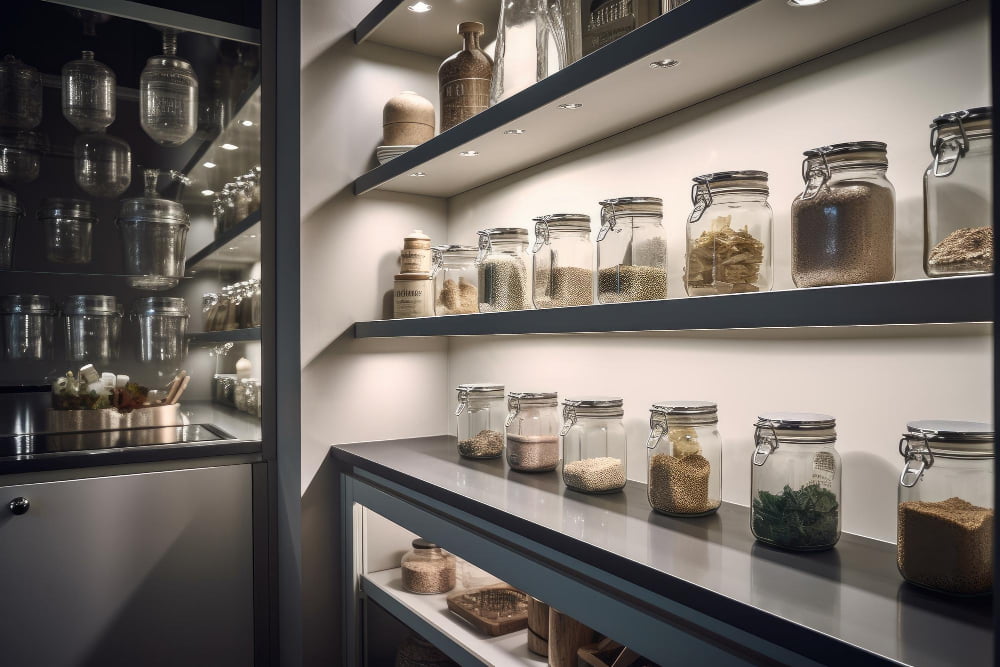
1. Consider Load-Bearing Capacity: Factor in the weight of the items you plan to store on your shelving. Reinforce shelves for heavier items such as canned goods and kitchen appliances.
2. Evaluate Height and Depth: The height between shelves should accommodate the tallest items you store most frequently. For depth, have a mix of deep and shallow shelves to accommodate different sized items and ensure easier access.
3. Material Selection: Options include metal, wood, and plastic. Consider durability, cleanability, and aesthetic appeal in the context of your pantry design. Metal and plastic are recommended for their easy maintenance.
4. Adjustable Shelving: Opt for a system that allows you to adjust the height of your shelves as your storage needs evolve.
5. Use of Baskets and Containers: These can help you organize and group items together on your shelves, streamlining access, and improving pantry navigation.
6. Corner Shelving: Utilize often overlooked corner spaces with corner shelving for better utilization and access.
7. Under-Shelf Storage: Invest in under-shelf baskets that create additional, easily reachable storage for smaller items.
Spacing Considerations for Optimal Pantry Use
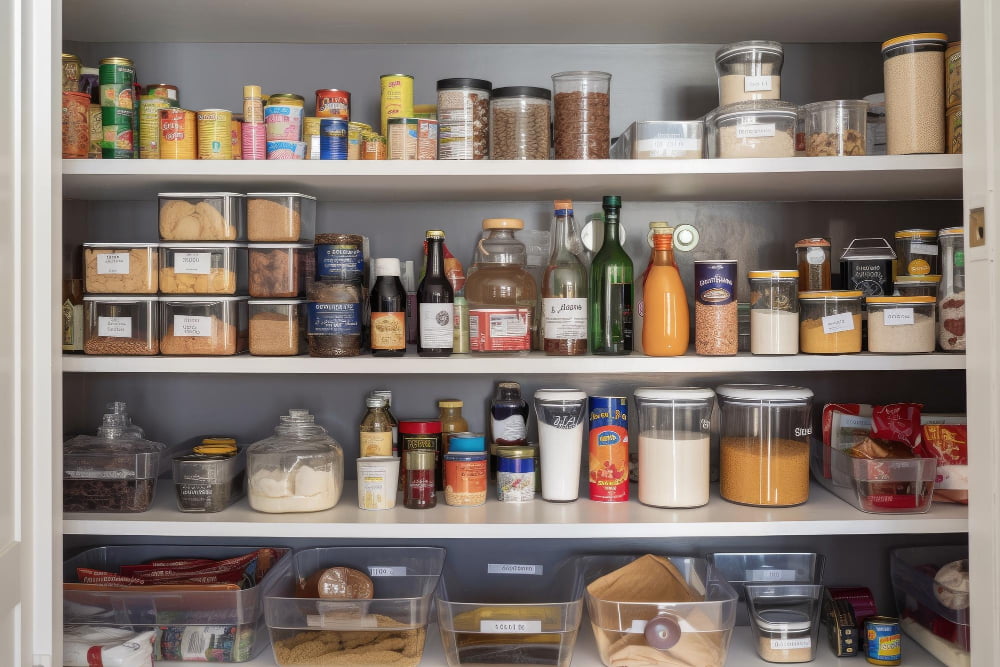
Effective utilization of pantry’s space is crucial for maintaining an organized kitchen, whether it’s large or small. Here are some key points to pay attention to for better pantry spacing:
1. Measure accurately: Always consider the size of items you plan to store in your pantry before arranging the shelves.
2. Shelf depth: Opt for shallow shelves at eye level to keep food items in visibility and reach.
3. Height of items: Adjust your shelves to fit the height of your pantry goods, maximize vertical space by using stackable containers.
4. Use of bins and baskets: Incorporate container usage for similar items or small packets.
5. Door space: If the pantry has a door, utilize it for additional storage. Hanging racks or over-the-door shoe organizers can hold spices or canned goods.
6. Corner usage: Corner shelves or Lazy Susans can efficiently utilize hard-to-reach spaces.
7. Light the area: Proper lighting can prevent overlooking items.
Remember, the goal of a well-planned pantry is to make items easy to find and reach, reducing unnecessary duplicate purchases and food waste.
Creative Ideas for Pantry Organization and Accessibility
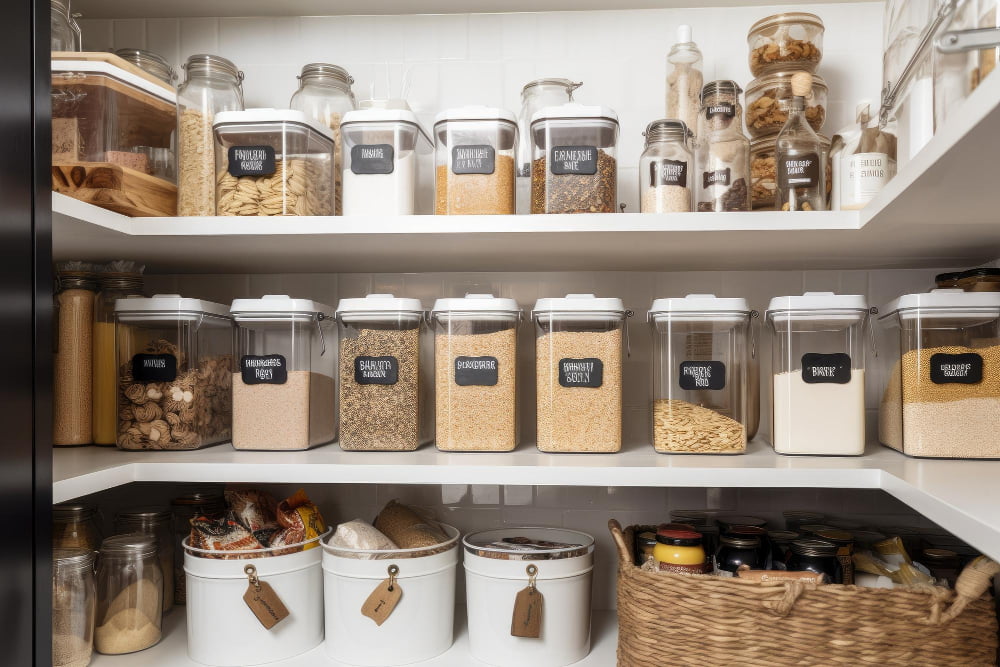
Utilize Clear Containers: Transparent storage enables easy identification of items, reducing rummaging and clutter.
Categorize Items: Group similar goods in your pantry, such as grains, canned goods, and baking items, for ease of retrieval.
Label Everything: Clear labels are essential for maintaining order and locating items quickly.
Maximize Vertical Space: Make use of the entire height of your pantry with high shelves or stacking bins.
Incorporate Lazy Susans: These rotating trays circulate your items, making everything accessible from one spot.
Slide-Out Shelves: They are a great way to access items at the back, increasing storage capacity while maintaining ease of accessibility.
Door Storage: Utilizing the back of your pantry door can add extra storage space for smaller items.
Adjustable Shelving: This allows you to adapt the space according to the size of your items, ensuring maximum utilization and less wasted space.
Bins and Baskets: Ideal for storing loose items like onions or potatoes. They also effectively contain small packets of sauces, spices, or nuts.
FAQ
Can a pantry be outside the kitchen?
Yes, a pantry can be located outside the kitchen in another convenient area of the home.
Where is the best place to put a pantry?
The optimal location for a pantry is adjacent to the fridge, sink or cooking range, challenging the notion of a single designated pantry area.
Do I need a pantry in my kitchen?
Yes, a pantry is necessary in a kitchen for efficient and organized storage of necessary food items like flour, pasta, beans, cereal, and sugar, regardless of the kitchen’s size.
Where should a pantry be placed in a small house?
In a small house, the pantry should ideally be positioned in an adjacent area just outside the kitchen to create more cooking space, fitted with shelving on the backs of doors and pullout shelves to optimize storage and accommodate food, supplies, and small appliances.
How can I effectively utilize a pantry in a non-kitchen space?
You can utilize a pantry in a non-kitchen space by storing non-perishable items such as canned foods, grains, and dried herbs, as well as non-food items like cleaning supplies, toiletries, and craft materials, with proper labeling and organization.
What can be considered as alternative solutions if my kitchen lacks space for a pantry?
To compensate for a lack of pantry space in the kitchen, consider implementing solutions such as hanging pot racks, using a trolley cart for storage, installing wall-mounted shelves, capitalizing on drawer organizers, or adding a freestanding pantry.
Can a pantry in another room add, or detract from, the overall value and functionality of the home?
A pantry located in another room can add value and improve the functionality of a home, given its strategic placement and design for easy access and optimum storage.
Recap:
